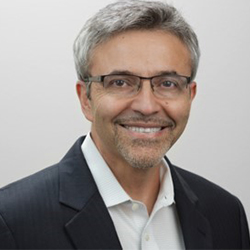Clinical Researcher—February 2020 (Volume 34, Issue 2)
SCIENCE & SOCIETY
Al O. Pacino
It has become vital to address the challenge of maintaining training and research competency levels of study staff for compliance purposes. The answer may exist in the building of a global, network-based infrastructure to fix the problem.
Whether you are involved in centralized or decentralized clinical trials, the expectations for keeping your site in regulatory compliance, while delivering efficient patient care, can be overwhelming for many clinical research professionals and associated managers. Governments and regulatory agencies are rapidly adopting already-established international regulations or developing modern privacy laws that require employers to verify and properly handle employee information by empowering healthcare professionals to own their information.
With the rapid evolution of privacy and international developments such as the European Union’s General Data Protection Regulation (GDPR), many of the systems used to process professional information existing in silos become a risk and can result in major setbacks and liabilities for investigator sites. Innovation is necessary for mechanisms used to enhance training and competency levels globally, and to address the growing number of privacy regulations pertaining to protecting personal data.
Based on the needs of a specific region, having sites be more responsive to the demands of GDPR and providing for some of the universal requirements of site activities, including those tied to multiple therapeutic areas, are necessary when considering solutions. The key to tackling this issue is to provide reliable connectivity between stakeholders, including educators, accreditation groups, institutions, sponsors, and investigator sites.
By embracing a transnational collaborative model, clinical research competencies, training, education, certification, and experience records become more accessible to industry stakeholders, including patients.
Providing the Necessary, Globally Interconnected System
It’s not uncommon to find individuals in a new city or town using applications on their smartphones to find restaurants, hotels, and a variety of other services. We must bring clinical research into the 21st century and organize industry service providers all in one place for the benefit of every industry professional.
By organizing industry providers into networking directories, site management and their staff can choose from services that align with their everyday managerial and compliance needs. An important component of the system can be registering and validating certified educators who deliver, distribute, and implement trainings, and it must track clinical trial competencies for study staff, as is currently required by regulatory agencies. To move our industry forward, it would be most beneficial to lean into the existing modern culture and interconnectivity of the different stakeholders.
The connection established between study staff and education providers does not have to exist on its own. Centralization of the records on training, certification, and other accomplishments of clinical research professionals would go together with a networks-based solution. Providing a live connection between internal departments can make the exchange and verification of healthcare professional experience, training certificates, and online courses easier to track and competencies easier to update in real time between departments.
The net result will be the increased promotion and tracking of career-building milestones tied to Good Clinical Practice, ethics/human subject protections, medical licenses, and the everyday work flow required for business and compliance within the context of a global industry that is now having to comply with GDPR and other privacy-focused demands.
Thinking Big is Paramount
An important aspect of modernizing our industry into an efficient network for improving study staff competency is the inclusion of new sites from across the globe—from those in developing nations to research-naïve hospitals and healthcare locations from more advanced countries. To make progress in any given therapeutic area, we must have a complete understanding of the clinical research ecosystem and broaden our understanding of non-Western world views.
From the perspective of those who advocate for more diversity in trial patients, a more connective infrastructure would facilitate and streamline patient education and standards of care while decreasing the risk of data variance as required by regulators. At the same time, a place would be provided within the network for certified translation businesses and nonprofits, in order to bridge the gap in competency internationally to maximize inter-rater reliability between countries.
The challenge to be taken up also involves patient screening instruments, scales of assessment, diagnostic tools, and competency and experience records, all of which should be shared in a more expedient, convenient, simple, and privacy-compliant system. The siloed, existing systems for completing compliance requirements has not gone far enough to handle the modern demands of time management for site and industry sustainability.
Conclusion
There is a growing desire for technology that enables frictionless sharing of data across the healthcare and clinical research ecosystem for driving faster, more cost-efficient methods of education and compliance for researchers across the globe. Developing an international infrastructure that equips investigative sites and industry stakeholders with broad connectivity, while providing the tools for long-term sustainability, will bring developed and undeveloped nations into a mutually beneficial relationship.
Let’s take steps toward a world in which investing in the creation of connective business models minimizes the business risks while improving accountability between sites, educators, and institutions so that we are all in compliance with regulators, major privacy laws, and international requirements like GDPR. Using a global collaborative, interconnected system will empower research professionals to own their data while spending more time applying their knowledge to gain meaningful results and ultimately leave no patient behind.

Al O. Pacino is President at BlueCloud® by HealthCarePoint Professional Collaborative Networks, based in Cedar Park, Texas, and a former member of the Editorial Advisory Board for ACRP.



